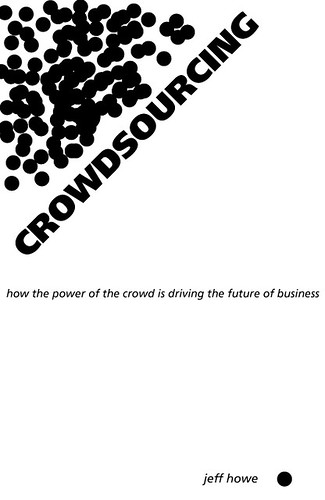
Crowdsourcing is a new way of getting a lot of work down by a lot of people in a short time. I've posted before about Jeff Howe and his book on the subject and now I state my views after reading the book.
WOW!
That's a bit dramatic, but crowdsourcing is really cool. I have become a solver for Innocentive (though I'm no where near solving anything on their website). I've seen the inexpensive, high-quality photos at iStockPhoto and the cool T-shirts at Threadless. All these websites incorporate crowdsourcing (people create and compete against others for reputation and/or prizes). There are limits to crowdsourcing (I'm sure), but I'm not sure what they are. Crowdsourcing is finding ways to make so many things better: better quality, better prices, and always merit-based.
In Howe's book, he concludes with his ten pointers on crowdsourcing which I've mostly paraphrased below for everyone who would like to get their work crowdsourced.
- Pick the right model--Crowdsourcing can be used in different ways; Collective Intelligence uses the wisdom of the crowd to solve problems (Innocentive is an example); Crowd creation facilitates the crowd in the creative process (iStockPhoto gives a place for people to sell their photos to the masses); Crowd voting(Threadless lets the designing community vote on the posted designs to choose a regular winner: also crowd creation); Crowd funding lets the crowd fund small businesses through loans that are impossible through corporate banks (Kiva and 40billion.com)
- Pick the right crowd--in order for your idea to take off you need a bunch of people who are willing to participate; find the people who are interested
- Offer the right incentives--even a token amount of money will excite some people. There has to be a satisfaction factor from participating, whether it comes from money or a reputation in the community of volunteers.
- No pink slips--be careful about restricting people and punishing users. Crowdsourcing is also community building and improving.
- Benevolent Dictator--People are generally good, but they often need infrastructure and commands to tell them what to do. The crowd is usually sensible and will recognize if someone is taking advantage of them.
- Keep it simple; break it down--Whatever the big picture for the project is, keep it simple so people understand your purpose and know what to work towards. Then break down the work into manageable pieces so that people can do their part and get the satisfaction of finishing something.
- Sturgeon's Law--Sturgeon said, "Ninety percent of everything is crud." Don't expect everything that the crowd gives you. Especially in creative circles, a lot of stuff isn't worth your time.
- 10% is the antidote to sturgeon's law--The reason crowdsourcing works is that the 10% is not crud. And when we consider the millions of people on the internet, ten percent is a lot.
- The community is always right--Once you've formed a community, the community makes decisions. As a benevolent dictator you have some power, but your power over the community is lent from the community and the community can take that power back whenever they want.
- Ask what you can do for the Crowd--Remembering the famous quote from our beloved JFK, "Ask not what (the crowd) can do for you, ask what you can do for (the crowd)."
I invite you to check the links to the different crowdsourcing websites that I have liked thus far. You can also check out some cool posts on member crowdsourcing and crowdsourcing analyzed by my professor, Gideon Burton. Finally, I invite you to comment with other cool crowdsourcing sites and ideas.
Crowdsourcing has potential, so get in a community and make a difference.
No comments:
Post a Comment